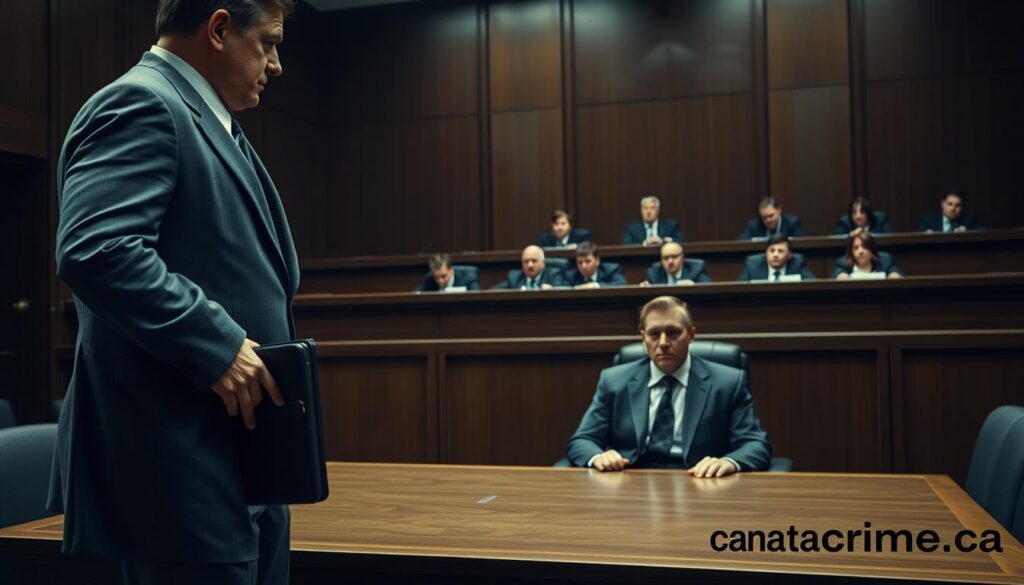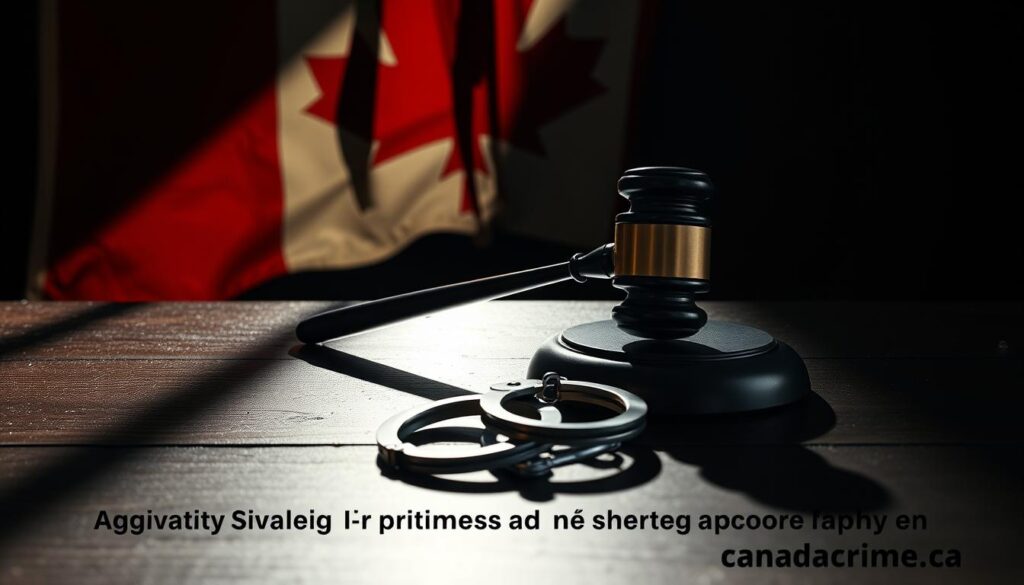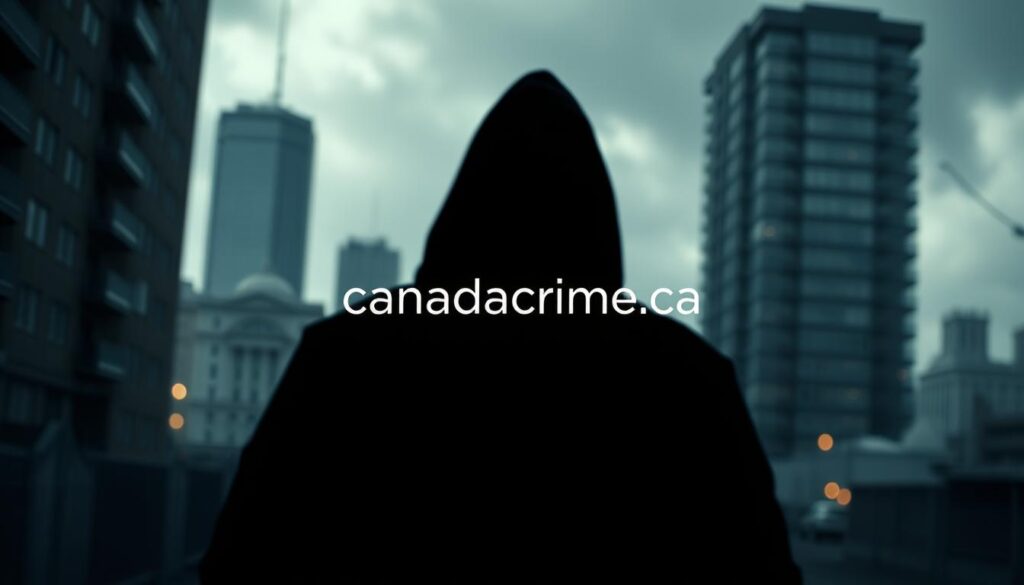In Canada, having child pornography leads to at least 90 days in prison. This shows how seriously Canadian law treats crimes against kids. This resource explains Canada’s child pornography laws, penalties, and ways to keep kids safe.
Canada’s child pornography laws are made to protect kids effectively. They explain what counts as child pornography and the penalties for having it. By learning about these laws, you can help prevent the exploitation and abuse of minors.
Definition of Child Pornography under Canadian Law
Child pornography is clearly defined in Section 163.1(1) of the Canadian Criminal Code. Knowing what counts as child pornography helps us follow the law and protect kids from harm.
Visual Representations
Any photo, video, or digital image showing someone under 18 in sexual acts falls under this category. It also includes images mainly of sexual parts or the anal area for sexual reasons. This is how the Canadian Criminal Code explains child pornography.
Written and Audio Material
Child pornography also includes written and audio content that promotes sex with minors. The Canadian Criminal Code aims to stop the sexual exploitation of children by addressing these materials.
Legal References
Legal references are key to fighting child pornography. The Canadian Criminal Code, in Section 163.1(1), lays out the rules to prevent children’s sexual exploitation. These laws help bring those guilty of such crimes to justice.
Making Child Pornography
Making child pornography is a very serious crime in Canada. It includes making, printing, publishing, or having it to publish. It’s important to know the legal consequences and how Canadian law enforcement fights these crimes.

Legal Penalties
In Canada, making child pornography is a major crime. Those guilty can be jailed for up to 14 years. This shows how serious the law is about stopping the abuse of minors.
Case Studies
Looking at different cases shows how tough Canadian law enforcement is. For instance, in 2012, a big bust led to several people being found guilty in an international ring. The strong punishments highlight the serious legal consequences for these crimes.
Distribution and Transmission of Child Pornography
In Canada, spreading child pornography is seen very seriously. It includes actions like sharing, selling, or advertising such material.

Offense Details
According to the Canadian legal system, spreading child pornography involves actions that make it accessible. This includes sharing online, mailing, or posting it on social media. These acts are severe crimes because they deeply hurt society and the victims.
Legal Consequences
The penalties for distributing child pornography are tough in Canada. Convicts can get up to 14 years in jail. These harsh punishments show how severe the crime is. They aim to stop people from committing it. The law in Canada seeks to keep children safe by harshly punishing those who spread such content.
Possession of Child Pornography
The possession of child pornography breaks the law in Canada. It comes with tough punishments. These aim to protect kids and keep society safe.
Criminal Code Details
Canadian Criminal Code Section 163.1(4) says holding child porn is illegal. This law applies to both digital and printed materials. Any sort of child porn, no matter how it’s kept, leads to serious legal trouble.

Penalties and Imprisonment
Those caught with child pornography face heavy criminal penalties. Harsher cases can lead to long jail times. Even smaller charges bring big fines, showing how seriously Canada takes this crime.
| Offense Type | Imprisonment Period | Fines |
|---|---|---|
| Indictable Offence | Up to 10 years | Varies by case |
| Summary Conviction | Up to 6 months | $5,000 and above |
Accessing Child Pornography
Looking at child pornography is a big no-no according to Canada’s laws. It means you’re knowingly watching or causing this type of content to come your way.

Legal Definition
Canadian laws say if you intentionally look at any content deemed as child pornography, you’re breaking the law. This includes anything from pictures to writings, gotten online or other ways.
Minimum Punishments
Canada is very tough on internet crimes, especially when they involve child pornography. It’s considered a very serious crime.
If you’re caught, the consequences are harsh, including up to 10 years in jail. This shows how dedicated Canada is to keeping kids safe and maintaining strict laws.
Defenses and Exemptions
In dealing with child pornography charges, some legal defenses and exceptions may be valid. Often, these defenses focus on the accused’s intent and the context of their actions. Understanding these can greatly aid in legal matters.
Legitimate Purposes
For child pornography, certain defenses relate to legitimate purposes. This ranges from law enforcement, scientific inquiry, medical needs, to education and art. These activities must be done safely, protecting minors from risk. For example, a teacher might use proper materials for a class but must avoid any child harm or exploitation.

Reasonable Steps for Age Verification
A key legal safeguard is taking proper steps for age verification processes. If content seems to involve underage individuals, strict age checks are needed. These checks usually require solid proof of age to prevent the accidental use of minor images.
Here’s a list of valid reasons and actions required:
| Purpose | Required Action |
|---|---|
| Justice Administration | Strict adherence to evidence handling protocols |
| Scientific Research | Ethical approval and informed consents |
| Medical Necessity | Clear medical documentation and age verification |
| Educational Use | Use of non-exploitative and legally-sourced materials |
| Artistic Endeavors | Documented intent and non-exploitative representation |
It’s key to understand and use these defenses and exemptions well. By being thorough with reasonable steps for age verification and proving a valid reason, your legal standing can improve significantly.
Aggravating Factors in Sentencing
In child pornography cases, courts look at many aggravating factors. These factors greatly affect the penalties given.

Intent to Profit
One key factor is if there was intent to make money. If someone uses child pornography to get rich, they get tougher penalties. This harsh treatment is to stop people from using children to make money.
Other Aggravating Factors
Other major factors include what the material shows, how old the victims are, and if the offender has done this before. If someone has been caught before, they usually get a longer punishment. All these factors are used to show how serious the crime is and to keep the community safe.
| Factor | Impact on Sentencing | Example |
|---|---|---|
| Intent to Profit | Significantly increases penalty severity | Offender sells child pornography for financial gain |
| Age of the Victim | Longer sentences for younger victims | Victims under 12 attract harsher sentences |
| Previous Convictions | Increases length of sentencing | Repeat offenders get longer prison terms |
| Volume of Material | Higher volume results in tougher penalties | Thousands of images/videos impact sentence |
Knowing these factors is key. They help the justice system punish those who profit from exploiting children correctly.
Reporting Child Pornography
It’s important for everyone, especially Internet Service Providers (ISPs), to report child pornography. Knowing Canadian law helps in reporting safely and correctly. This is key to stopping this crime.
Duties of Internet Service Providers
Internet Service Providers have a big role in fighting child pornography. Canadian law requires ISPs to report any such content they find. If they don’t, they could face serious legal trouble. Their quick action is crucial in protecting children online.
Reporting Mechanisms and Legal Immunity
There are easy ways to report child pornography. ISPs and people who are worried can call the police or special hotlines. Thankfully, if you report honestly, you’re protected by law. You won’t get in trouble for reporting if you do it with good intentions. This protection encourages more people to help stop child exploitation.

Other Related Offences and Terms
In Canadian law, it’s important to know the difference between indictable and summary convictions. This knowledge is key to understanding how legal cases are handled.

Indictable vs. Summary Convictions
Indictable offenses are serious crimes, similar to felonies in the U.S. They come with harsh penalties. These charges need a formal accusation and a judge or jury decides the outcome.
Summary convictions are less serious, more like misdemeanors. The legal process here is quicker and the penalties are lighter. Knowing these terms helps navigate *Canadian criminal law* and proceedings.
Relevant Legal Terminology
Knowing legal terms is crucial in discussing Canadian crimes. Terms like “custodial sentences”, “probation”, and “bail” are common. Also, understanding how indictable and summary cases differ makes the legal system clearer.
Custodial sentences mean jail time. Probation allows someone guilty to stay in the community with rules. Bail lets an accused person be free until their trial if they follow certain conditions.
To make things clear, here’s a comparison:
| Term | Explanation |
|---|---|
| Indictable Offense | A serious criminal offense requiring a formal charge and trial. |
| Summary Conviction | A less severe offense with simplified legal proceedings. |
| Custodial Sentence | Imprisonment as punishment for a crime. |
| Probation | Allowing the convicted individual to serve their sentence in the community under supervision. |
| Bail | Temporary release of an accused individual awaiting trial under set conditions. |
Conclusion
Understanding Canada’s laws on child pornography is key to protecting young people and ensuring justice. In this guide, we looked at the laws, including what counts as child pornography and the crimes of making and sharing it. We also talked about the heavy penalties for having and accessing it, showing Canada’s strong stance against these offenses.
This overview shows why tough actions are needed to keep children safe from harm. The differences between more serious and less serious crimes, along with extra penalties for certain cases, show Canada’s detailed laws. Plus, certain crimes have extra penalties added to make the punishment even tougher.
If you need more information, like on sentencing guidelines and legal details, look at this guide on sentencing for child pornography. It’s a great resource for understanding the legal issues surrounding these serious offenses. Through its efforts, Canada is working hard to protect young people and make sure justice is served. This guide is an important part of achieving that mission.

